Leh Ladakh DAY4
23 rd July 2024
Hanle-Valley
 |
| Hidden heaven cootage |
เช้านี้เรายังต้องอยู่ที่ Merak อีกสักพักเพื่อจบภาระกิจตามหานกกระทาธิเบต วันนี้เราจะออกเช้าหน่อยประมาณ ตี 5 ครึ่ง รถวิ่ง 20นาทีก็ถึงหมาย ที่เคยมาแล้วเมื่อวาน ลักปาเริ่มออกเดินค้นหานกในทุ่งหญ้าบนเนิน พวกเราก็เดินตามเพื่อรอสัญญานดีจากลักปา ระหว่างทางก็เก็บภาพนกเล็กไปพลางๆ
ทไวท์ หรือบ้านเราเรียกกันติดปากว่าทวิตี้ เป็นนกรับแขกอยู่ย่านนี้ ส่งเสียงร้องเรียกกัน “ ทไวซ์ ทไวซ์” เข้าใจได้ นกกระจิ๊ด Dusky Warbler นกอพเจอเเฉพาะที่นี่ และเจอเป็นวันที่2
 |
| Twite |
 |
| Tickell’s Leaf Warbler |
ประมาณ 9โมง เราก็เริ่มเห็นกระทาปรากฏตัวไกลๆ ไกลๆ ลักปาเรียกทุกคนมารวมตัวกันเพื่อให้ บันทึกเร็คคอร์ดชอต หลังจากนั้นก็เริ่มขยับเข้าไปใกล้ๆแต่นกกระกระโดดหนีไป หลังจากนั้นก็แยกย้ายกันตาม เจอหลายตัว แต่น้องก็มุดแลัซ่อนตัวเก่งมาก บางครั้งเดินไปเกือบถึงตัวจึงกระโดดออกจากพุ่มไม้วิ่งหนีไป
Tibetan partridge
Somewhat different in appearance from the other Perdix species such as the grey and Daurian partridges this 28–31 cm long partridge has the brown back, blackish belly patch and chestnut flanks of its relatives, but has a striking black and white face pattern, which contrasts with the rufous collar.
The forehead, broad supercilium, face and throat are white. A broad black stripe runs down the face from below the eyes and it has a broad chestnut hind neck collar. The upper parts are buff, barred with rufous and black. The other tail-feathers are chestnut, tipped with white. The lower plumage is pale buff closely barred with black, with broad chestnut bars on the flanks. The male has a black belly patch which is barred in the female. The female is otherwise similar to the male but duller, and the juvenile is a featureless buff-brown, lacking the distinctive facial and underpart markings of the adult. Sexes are similar in size.[
พวกเราแยกย้ายกันตามหา และทุกคนก็ได้ภาพในวิวที่ต่างกันๆเพราะมีหลายตัว เมื่อเห็นว่าทุกคนน่าจะพอใจแล้วลักปาก็ เรียกรวมตัวเพื่อเดินทางต่อไปอีกเมือง ก่อนขึ้นรถก็เห็น เหยี่ยวทะเล รายขายาว เกาะอยู่ที่สันทรายใกล้ๆ
Durbuk
Durbuk is at a key location between the Indus Valley to the west, the Shyok Valley to the east and the Pangong Lake region to the south. The trade routes to Yarkand (via the Shyok Valley) as well as Rudok (via the Pangong Lake) passed through here.
Durbuk lies in the valley of the Tangtse River, which is described as "well-cultivated" in the British sources. The river is also said to be swarming with fish. Godwin-Austenbelieved that the valley must have been the bed of a lake at some point in the pas
เราผ่านชนบทเล็กๆของเมือง ลาบุคที่เงียบเหงาแทบจะมองไม่เห็นผู้คน แต่ละบ้านก่อรั้วด้วยหินวางเรียงซ้อนกันมีลานเลี้ยงปศุสัตว์หรือที่นาแปลงเล็กติดกับบ้าน
ยังสงสันอยู่เค้าเดินไปดูอะไรกัน
เรามาถึงทะเลสาปสีทองเล็กๆแห่งหนึ่ง เห็นลูกเล็กๆของนกหัวโต Lesser Sand Plover หรืออีกชื่อ คือ ธิเบต Sand Ploverเดินเเกร่วไปมาเหมือนรอแม่อยู่ที่คันดินริมถนน ไม่นานตัวแม่ก็เริ่มปรากฏตัวหลังจากชินกับกลุ่มเราที่เดินสาดส่องกล้องไปทั่ว
Siberian/Tibetan Sand-Plover
The Siberian sand plover and the Tibetan sand plover were previously considered to belong to the same species known as the "lesser sand plover", consisting of five races within the species complex. However, a study published in 2022 suggested that the "mongolus" group (currently identified as the Siberian sand plover) within the lesser sand plover is actually the sister group of the greater sand plover. Additionally, the "atrifrons" group (representing the Tibetan sand plover) is the sister group of the monophyletic group formed by the "mongolus" group and the greater sand plover.
ก่อนหน้านี้นกหัวโตทรายไซบีเรียและนกหัวโตทรายทิเบตเคยถูกพิจารณาว่าอยู่ในสายพันธุ์เดียวกันที่เรียกว่า "นกหัวโตทรายเล็ก”
Tibetan sand plover
เส้นทางที่เรากำลังจะไปเมืองฮาน์เล่ จะเป็นเขตทหาร ผู้ที่ต้องการสัญจรผ่านทางนี้จะต้องทำหนังสือขออนุญาตจากทางราชการมาก่อนรวมถึงพวกเราด้วย ที่ทางลักปาได้เตรียมขอให้ตั้งแต่วันที่มาถึงเลห์วันแรก โดย เจ้าหน้าที่จะตรวจ ร่วมกับพาสปอร์ตและแสดงตัวตนก่อนผ่าน
เมืองนี้มีการรนณรงค์เพื่อการอนุรักษ์นกกระเรียนอย่างเป็นรูปธรรมถึงขั้นสลักรูปนกที่หน้าผาหินตรงทางเข้าเขตเมือง
ตามเส้นทางจะเจอทหารปฏิบัติภาระกิจอยู่ทั่วไปๆประชากรหหารดูจะมีปริมาณพอๆกับกับประชากรที่มา อยู่อาศัยบริเวณนี้
 |
| Upland Buzzard |
What They Do
Individual Upland Buzzards vary quite a bit in their plumage patterns and colors. They can range from being quite dark overall, to rather pale. However, all individuals have relatively long, barred tails and their legs are partially feathered. One of the key features of this buzzard is that it flies with its wings in a "V" shape.
This buzzard does engage in migratory movements and avoids areas that are covered with snow
เรามาถึง Hanle เนียบร้อยแต่ยังไม่เข้าที่พัก ลักปา อย่ก็พาเราไปตามหา นกเป้าหมายสำคัญนักดูนกที่เดินทางมายังเมืองนี้ Eurasian eagle-owl
หมายของนกล่าสุดคือบริเวณภูเขาใกล้วัด ซึ่งนกจะมาฮาศัยเป็นรังนอน ช่วงกลางวัน และวันนี้เป็นวันสำคัญทางศาสนาพุทธ มีประชาชนมาทำพิธีทางศาสนากันหนาแน่นมากบางครอบครัวถึงขั้นมา ปักหลักกางเตนท์พักแรมอยู่ที่นี่หลายคืน ดูแววเหมือนจะมีโอกาสเจอนกได้ยาก แต่หลังจากใช้ไบนอคแสกนหาตามซอกเขา จนเกือยหมดทุกซอกซอย จนเกือบไปถึงกำแพงวัด ลักปาก็โบกมือเรียก got it got it น้องเกาะอยู่ใต้ชะง่อนหินสูงมาก สีก็กลมกลืนกับโขดหิน ต้องชี้เป้ากันอยู่นานกว่าจะเห็นกันทุกคน

หลังจากได้เรคคอร์ดชอตแล้ว พวกที่ยังมีแรงก็ไต่เขาขึ้นไปอีกสเตปเพื้อได้ภาพที่ใกล้ขึ้น ได้แล้วก็ไต่สูงขึ้นไปอีก จนในที่สุดนกก็โผบินออกจากรังนอนหายลับไป
Eurasian eagle-owl Very large and powerful owl with obvious ear tufts, deep orange eyes, and finely streaked pale buffy underparts. Active mainly at night, but can be seen perched up on prominent lookouts at dusk, searching for prey. Can be found roosting during the day in shady canopy or caves. Pairs often duet, with the male giving a deep, resounding hoot and the female giving a hoarser, higher-pitched one. Inhabits a wide range of habitats, from forests to rocky canyons, but generally abundant nowhere.
 |
| เราอุตสาห์ปีนขึ้นไปกับเขาด้วยปีนขึ้นมาแล้วลืมมาร์คจุด เล็งหานกอยู่ตั้งนานกว่าจะควานหาเจอ ถ่ายได้ 3-4 ชอต นกบินส่วน อาจารย์บอยปีนขึ้นมาถึงเหนื่อยหอบ นั่งหมดแรงพูดไม่ออกอย่าว่าแต่จะยกกล้องขึ้นถ่ายเลย |
Owl ชนิดนี้ตัวใหญ่มากและทรงพลัง มีกระจุกหูที่ชัดเจน ดวงตาสีส้มเข้ม และขนสีน้ำตาลอมเหลืองมีลายละเอียดอย่างประณีต ออกหากินในเวลากลางคืนเป็นส่วนใหญ่ แต่สามารถพบเห็นได้ในวิวที่โดดเด่นในเวลาพลบค่ำเพื่อค้นหาเหยื่อ ในเวลากลางวัน อาศัยอยู่ตามร่มเงาหรือถ้ำการจับคู่มักจะร้องคู่ โดยตัวผู้จะส่งเสียงที่ดังก้องกังวาน และตัวเมียจะส่งเสียงแหบกว่า อาศัยอยู่ในแหล่งที่อยู่อาศัยที่หลากหลาย ตั้งแต่ป่าไม้ไปจนถึงหุบเขาหิน แต่โดยทั่วไปจะยากมาก
ลักปาเล่าว่า ปกตินกดูนกที่มาที่นี่จะเผื่อเวลาไว้สำหรับพักที่นี่ 3 คืน เพื่อจะได้ไม่พลาดโอกาส แต่พวกเราได้เจอในวันแรกถือว่าโชคดีมากๆ
โชคของพวกเรายังไม่ได้หยุดอยู่แค่นั้น หลังจากลักปาพาไปเดินตระเวณหาแมวบริเวณภูเขาที่เป็นที่ตั้งเจดีย์โบราณ ซึ่งคาดว่าคงจะเคยเจอแมวที่นั่น เดินวนรอบภูเขาหนึ่งรอบก็ไม่มีวี่แวว เลยขึ้นรถ กลับระหว่างทาง เจอรถกลุ่มนักดูนกชาวอินเดีย จอดรถส่องอยู่บนยิดเนินเขาไม่สูงมาก อ้าวเจอแล้ว แมวที่ต้องการ ตัวแรกเป็นลูกแมวนั่งรับแสงสีทองอยู่บนยอดเขา ตามองมาที่พวกเราแบบสงสัยใคร่รู้ว่ามาทำอะไรกัน ไม่นาอนตัวพี่และแม่ก็ไต่ขึ้นมาสมทบ น่ารักมากๆๆๆๆจบวันแบบยิ้มแย้ม
Pallas's cat
The Pallas's cat (Otocolobus manul), also known as the manul, is a small wild catwith long and dense light grey fur, and rounded ears set low on the sides of the head. Its head-and-body length ranges from 46 to 65 cm (18 to 26 in) with a 21 to 31 cm (8.3 to 12.2 in) long bushy tail. It is well camouflaged and adapted to the cold continental climate in its native range, which receives little rainfall and experiences a wide range of temperatures.
แมวของพัลลาสได้รับการอธิบายครั้งแรกในปี พ.ศ. 2319 โดยปีเตอร์ ไซมอน พัลลาส ซึ่งสังเกตเห็นมันในบริเวณใกล้กับทะเลสาบไบคาล นับตั้งแต่นั้นเป็นต้นมา มีการบันทึกภาพนี้ทั่วภูมิภาคขนาดใหญ่ในเอเชียกลาง แม้ว่าจะอยู่ในพื้นที่ที่มีระยะห่างกันอย่างกว้างขวางตั้งแต่เทือกเขาคอเคซัส ที่ราบอิหร่าน เทือกเขาฮินดูกูช บางส่วนของเทือกเขาหิมาลัย ที่ราบสูงทิเบต ไปจนถึงภูมิภาคอัลไต-ซายัน และเทือกเขาไซบีเรียใต้ อาศัยอยู่ในทุ่งหญ้าบนภูเขาหินและพุ่มไม้ โดยมีหิมะปกคลุมอยู่ต่ำกว่า 15–20 ซม. (6–8 นิ้ว) มันพบที่กำบังในซอกหินและโพรง และเหยื่อที่สำคัญที่สุดคือลาโกมอร์ฟและสัตว์ฟันแทะ ตัวเมียจะให้กำเนิดลูกแมวระหว่างสองถึงหกตัวในฤดูใบไม้ผลิ
นกเขนทะเลทราย บินมาลงพื้นใกล้ๆรถเรา แย่งซีนไปนิดนึงก่อนจาก
Desert wheatear The plumage of the upper parts of the male in summer is buff. The underparts are white with a buff tinge on the breast. The black on the face and throat extends to the shoulders, and there is distinct white superciliary stripe. The female is greyer above and buffer below and has no black on the throat, and in the winter plumage the black on the throat of the male is partially obscured by the white tips of the feathers. A distinguishing characteristic, in both sexes of all ages, is that the entire tail is black to the level of the upper tail-coverts.
วันนี้ก่อนนอน ทำเช็คลิสต์นกวันนี้ได้นกใหม่เพิ่มอีก 10 ชนิดพรุ่งนี้หาเพิ่ม Day5http://www.jungjahut.com/search?q=Hanle
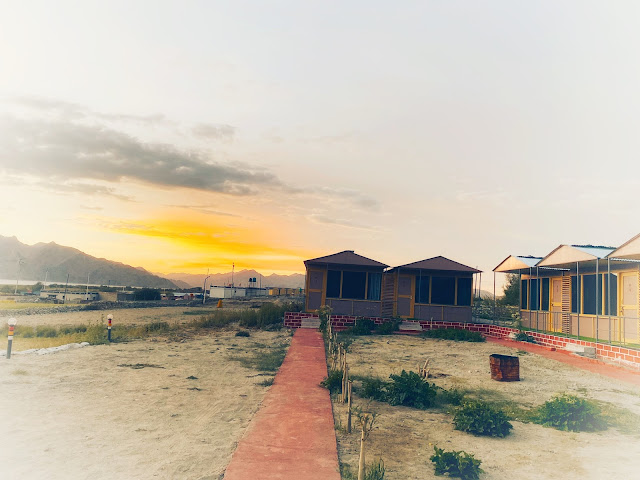


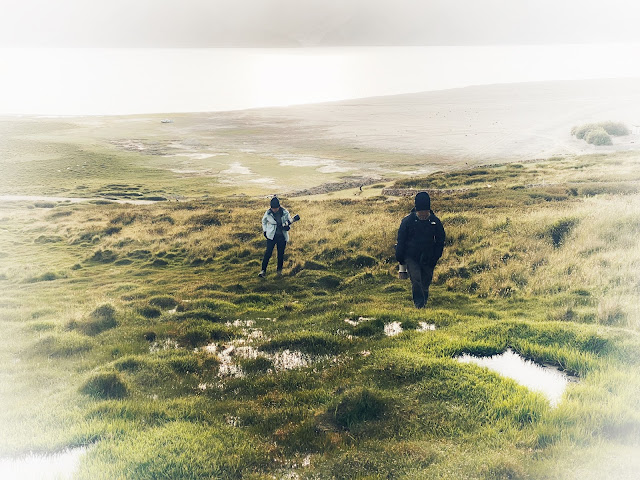





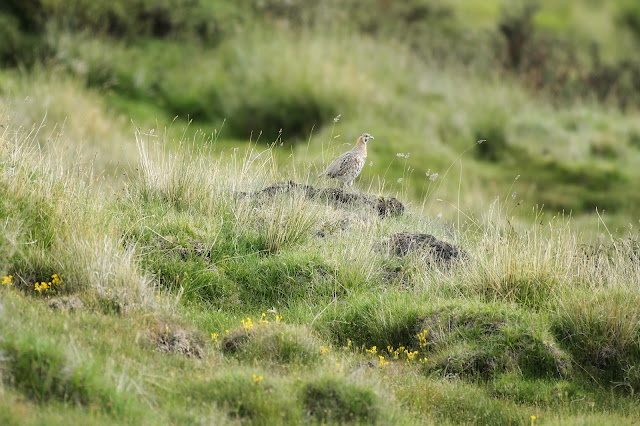





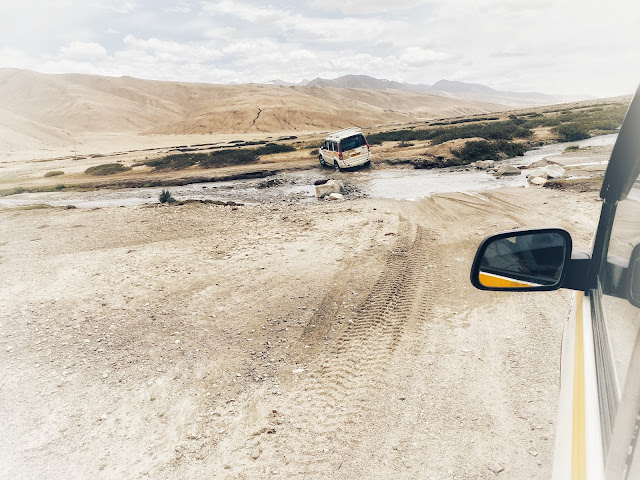










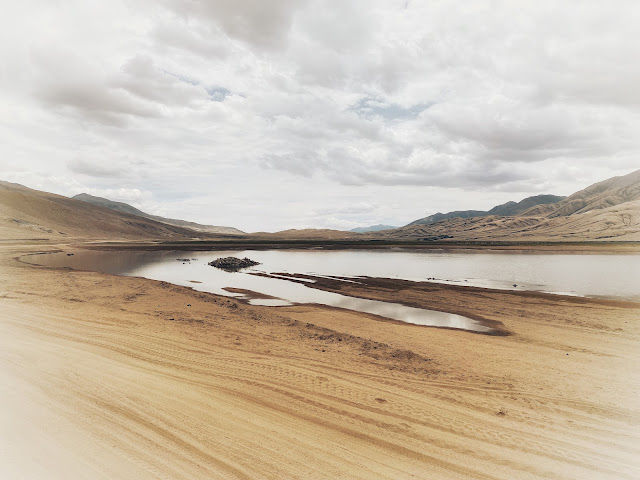




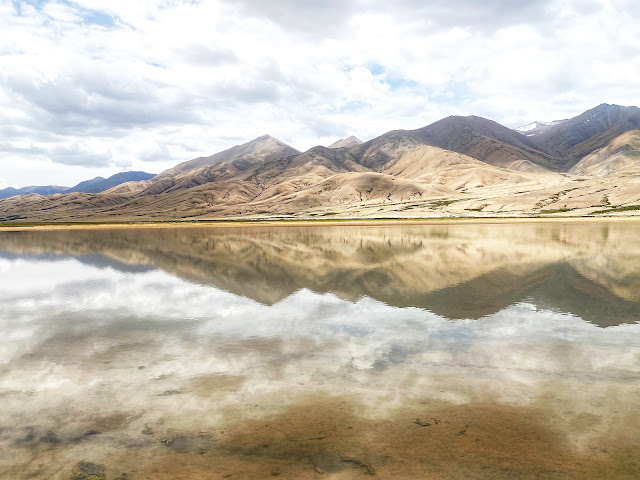


















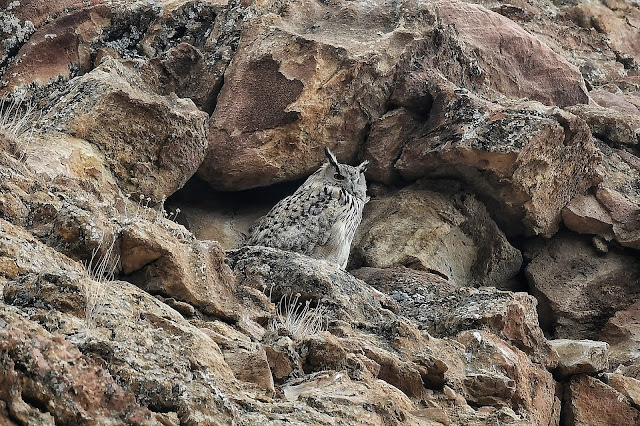


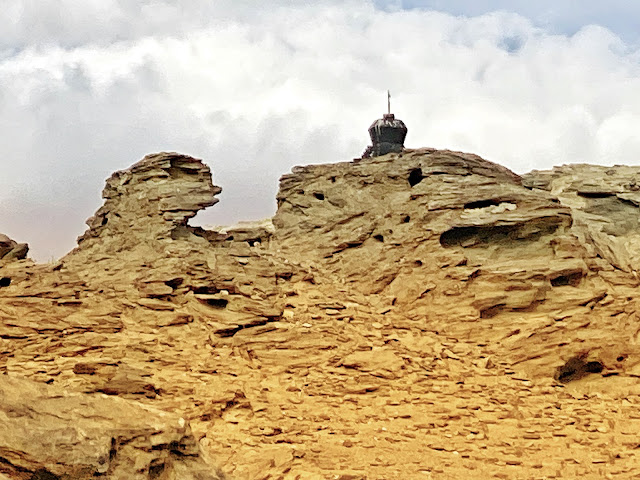








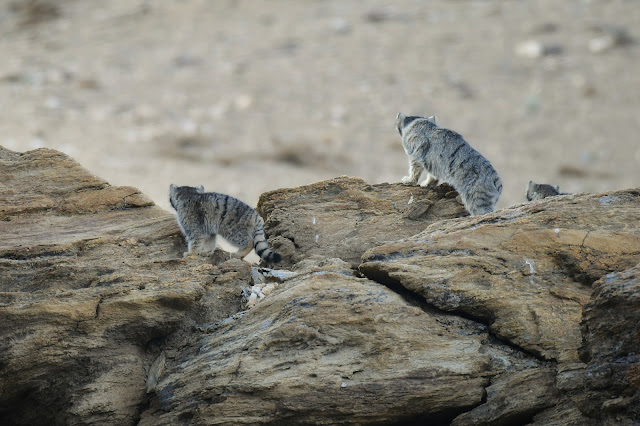





ไม่มีความคิดเห็น:
แสดงความคิดเห็น